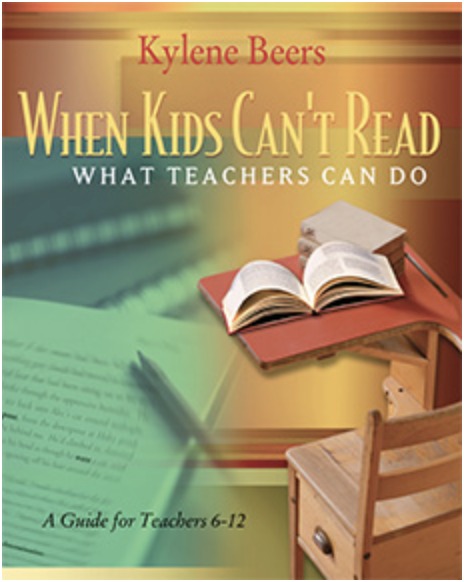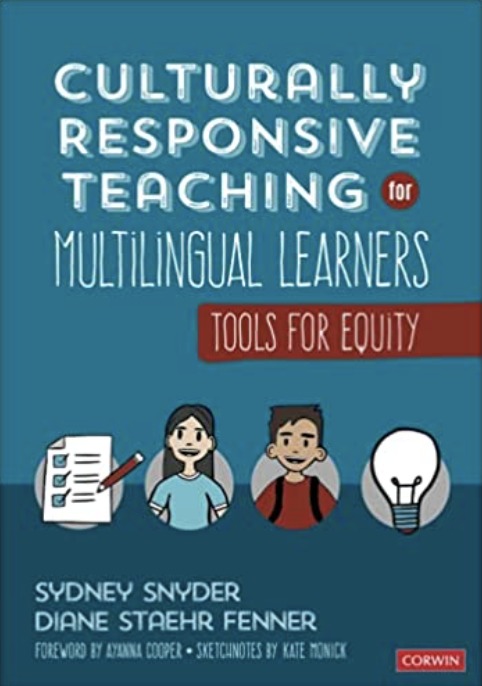[podcast_subscribe id=”7428″]
In this episode, we are sharing our summer reading list for teachers. We will go over what we are currently reading, recommendations for reading, as well as what we want to read ourselves this summer.
If you like what you hear, then share this episode with a colleague or friend, and make sure you subscribe so that you don’t miss out on any new content! If you are able, consider supporting the show by buying us a coffee!
We would love to hear from you – leave a comment here, OR check out our FLIPGRID!

Show Notes
We are excited to be back this week, and to share our summer reading lists! We are relieved that the school year is over at last. It has been an exhausting year, so we are excited to get some rest, but also to look towards our own learning this summer.
We will start with what we are currently reading (or about to start in Katie’s case), and more towards recommendations.
Current Reading List
Katie’s Current Book:

“Cultivating Genius: An Equity Framework for Culturally and Historically Responsive Literacy” by Gholdy Muhammad
While she hasn’t started yet, this book is the first on her list of books to read this summer for professional learning. There have been some policy changes in our Board that affect how we select texts and course materials that we use with students. The ultimate goal of this policy is to ensure that our students feel that they are reflected in the course, and that feel seen, heard and valued in the classroom.
This text will help you to really think about how we approach teaching, and will guide educators to bring equity back to focus in the classroom. It is divided into three different sections:
- Part 1: Drawing from History to Reimagine Literacy Education
- Part 2: Teaching and Learning with the Four-Layered HRL Framework
- Part 3: Implementing Historically Responsive Texts and Lesson Plans
Rachel’s Current Book:

“Ungrading: Why Rating Students Undermines Learning (and What to Do Instead)” – Edited by Susan D. Blum
This book is created by a bunch of different contributors. Each chapter of this book is written by a different author. Every contributor is a master of this ungrading practice, and sharing their knowledge of how this can be done in the classroom.
There is a free Ungrading Workshop, hosted by Jesse Stommel (a pretty big name in this industry), and it is mindblowing! It really identifies the bias and equity issues that are a part of how we grade. The book does a deep dive from different perspectives from a variety of different fields or subject areas, as well as in different levels of education.
Book Recommendations:
“Unlocking English Learners’ Potential: Strategies for Making Content Accessible” – Diane Staehr Fenner & Sydney Snyder

This resource is highly recommended for all teachers, and not just those that teach English Language Learners. Throughout this resource, multiple strategies and tips are provided to help get you started in making your course content more accessible.
The best part? It doesn’t just benefit ELLs, but it benefits all students in your classroom.
If you are new to teaching, or are looking for ideas on how you can better support students, particularly English Language Learners, then this is a resource for you!
“Powerful Teaching: Unleash the Science of Learning” – Pooja Agarwal & Patrice Bain

This book gives background knowledge of cognitive science research and how it applies to learning in the classroom. There are so many useThey go over retrieval practice, and how to integrate it in your classroom.
They also go over space intervals, and how to maximize it, as well as many other strategies.
The two are a great combination of scientist and educator, as each bring their expertise on the subject. It has a strong research focus, with practical strategies on how to implement.
“When Kids Can’t Read: What Teachers Can Do: A Guide for Teachers, 6-12” – Kylene Beers

Katie recently used this text to help further my own learning with respect to how we can help support students that can’t read in the intermediate and/or secondary classroom.
As secondary teachers, we don’t often think about, or even consider, how we can support students with developing their reading skills. Many students could be struggling silently, too afraid to share. This resource gives educators practical strategies on how you can foster reading development in your classroom (even if it isn’t an English classroom!).
“Flip Your Classroom: Reaching Every Student in Every Class Every Day” – Jonathan Bergmann & Aaron Sams

These two authors are pioneers in the field of flipping your classroom. They go into the basics of how to flip your classroom, as well as flipped mastery classrooms, the in-class flip (more of a self-paced structure vs. watching videos outside of class time), and more!
It’s a really great resource to get you started if you have been thinking about implementing this type of format to your classroom.
Our Summer Reading Lists
Now we are going to share some books that we plan to read this summer! Feel free to check them out, and we will be sure to share texts that we have found really helpful.
Rachel’s Summer List:
“The Impact Cycle” – Jim Knight

This book is all about coaching cycles and how to structure the different pieces of that cycle. Jim Knight has a lot of different coaching books as well; this happens to be the one that Rachel has, which is why she has selected it.
“Culturally Responsive Teaching and the Brain” – Zaretta Hammond

This text is also science-based. It talks about the neuroscience and how it connects with culturally responsive pedagogy. This is supposed to be a great resource, so here’s hoping!
It includes info on how one’s culture programs the brain to process data and affect learning relationships, 10 key moves to build students’ learning operating systems, and prompts for action and valuable self-reflection. These all connect to ungrading and mastery-based classrooms, as well as our move towards more culturally responsive and relevant materials.
“Fair Isn’t Always Equal” – Rick Wormeli

This book is about grading – more about standards-based grading vs mastery-based or ungrading. There are examples, and it talks about how to have an overall vision for assessment and grading practices within a school.
“The Power of Making Thinking Visible” – Ron Ritchhart & Mark Church

This is a follow up to “Making Thinking Visible.” It has thinking routines, research and case studies all based on Harvard’s Project Zero. This is a great one to get us thinking about how we can use these routines with our students in the classroom with their Thinking Routines Toolbox.
“The Design Thinking Playbook” – Michael Lewrick, Patrick Link, & Larry Leifer

This one has very small font – so be prepared! It isn’t actually written for education, but is very general and/or business-oriented. It goes through the design thinking process, gives examples, things to consider, and more! The illustrations are beautiful as well!
Katie’s Summer List:
“This Place: 150 Years Retold” – Multiple Authors/Contributors

This graphic text has ten different non-fiction stories told through the lens of the Indigenous peoples of Canada. Each of the authors or contributors, as well as the illustrators are Indigenous as well.
At the beginning of each story is a visual timeline that helps the reader understand what was happening in Canada (or the world) at the time, as well as important facts or dates that relate to that event or individual.
CBC has also just started release the podcast called “This Place” – hosted by Rosanna Deerchild. It is an audio adaptation of the text.
The text, and hopefully the podcast as well, are great resources for history classrooms, as we move towards teaching a more accurate and full history of Canada.
“Culturally Responsive Teaching for Multilingual Learners” – Sydney Snyder & Diane Staehr Fenner

In this text, they offer practical research-based tools that you can implement in any classroom. It is cross-curricular, which is so important (and helpful)! They also include case studies and exercises to get you thinking about your own implicit bias as an educator, and how it impacts the way that you teach.
This text could be an ideal candidate for a staff book study!
“Come On In: 15 Stories about Immigration and Finding Home” – Adi Alsaid

This is a book that is a compilation of 15 different stories about immigration and finding a new home in a new place. Each of the authors shares a bit about their own story and finding a way to fit in to a new culture and way of life.
The stories aren’t necessarily about the authors themselves, though they have used some of their personal experiences to create these stories.
“21 Things You May Now Know About The Indian Act”- Bob Joseph

This book offers a glimpse into how the Canadian government used laws to discriminate against and prevent Indigenous peoples in Canada from being able to succeed, or even be treated fairly or equitably in society. It is really important learning that needs to happen, and can also be incorporated into history lessons to better inform the younger generations of how systemic racism was incorporated into laws.
There’s also a course being offered for free through University of Alberta on Coursera. It is called “Indigenous Canada Course” and is a great opportunity to get started on your own learning journey about Indigenous history in Canada.
Additional Reading Lists to Consider
Katie reads a variety of novels every summer in order to find some more novel options that offer a variety of cultures and perspectives for her students. She teaches English as a Second Language courses, which are English courses for newcomers and/or students that are learning English.
Here are the novels/texts that she will be reading this summer:
- “Gutter Child” by Jael Richardson
- “When Stars Are Scattered” by Victoria Jamieson & Omar Mohamed
- “The Night Diary” by Veera Hiranandani
- “Fun Home” by Alison Bechdel
- “Genesis Begins Again” by Alicia Williams
- “New Kid” by Jerry Craft
- “Pemmican Wars: A Girl Called Echo Vol. 1” by Katherena Vermette, Scott B Henderson & Donovan Yaciuk

Do you have any texts that you are reading and would recommend for us or our listeners? Feel free to leave a comment on our website, OR leave us a message on our Flipgrid!





